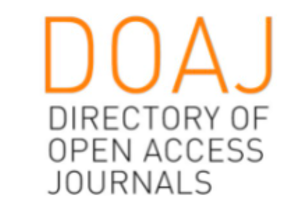INTEREST RATES ON INTERBANK LOANS
DOI:
https://doi.org/10.7251/OIK1402003SKeywords:
interbank market, banking system, interest rate, Libor, Euribor, Belibor, BeoniaAbstract
The primary objective of the present study was to analyze the impact of the financial crisis in the euro area money market. Well regulated and efficient money market is crucial for the maintenance of liquidity. The importance of a interbank market can be seen in the crisis period when, because of the unstable economic conditions, there was a lack of fund.
In this paper, first, presents the movement of daily reference rate for loans in the London interbank market, its comparison with the time indicated on the possible manipulation of the money markets. Then consider an indicator of stress in the interbank market, shown by movements in interest rates that apply in the euro zone. Special attention is paid to the role and importance of the reference rate for the Serbian dinar funds interbank market. In the last section have been analyzed and the movement of all the abovementioned interest rates on interbank loans (LIBOR, EURIBOR, BELIBOR and BEONIA) during the crisi, in order to determine how the interbank lending actually contributed to the development of the interbank market.
References
Aikin, S. (2012). Trading Euribor and Eurodollar Futures. Hampshire: Harriman House Limited.
Angeloni, C. & Wolf, G. B. (2012). LTRO, interbank stress and banks’ stock prices: a conundrum?. Preuzeto 28. novembra 2012. sa sajta: http://www.bruegel.org/nc/blog/detail/article/723-ltro-interbank-stress-and-banks-stock-prices-a-conundrum/
BBA libor. (2012). The basics. Preuzeto 23. januara 2014. sa sajta: http://www.bbalibor.com/explained/the-basics
Đolai, S. (2011). Istraživanje portala: Izabrati fksne kamate ili rizikovati?. Preuzeto 28. novembra 2012. sa sajta: http://banke.online.rs/42/807/clanak.htm
Furtila, S. (2008). Referentna kamatna stopa narodne banke Srbije kao instrument regulisanja inflacije. Preuzeto 09. aprila 2014. sa sajta: http://www.ubs-asb.com/Portals/0/Casopis/2008/11_12/B11-12-2008-Furtula.pdf
Global-rates.com. (2013). LIBOR - Hintergrundinformationen über den LIBOR. Preuzeto 23. januara 2014. sa sajta: http://de.global-rates.com/zinssatze/libor/libor-hintergrundinformationen.aspx
Global-rates.com. (2012). 3 month Swiss franc LIBOR interest rate. Preuzeto 28. novembra 2012. sa sajta: http://www.global-rates.com/interest-rates/libor/swissfranc/chf-libor-interest-rate-3-months.aspx
Ellis, D. & Campana, B. (2013). Reforming the Benchmarks: Similarities and differences between LIBOR and EURIBOR. Preuzeto 09. februara 2014. sa http://www.fticonsulting.com/global2/media/collateral/united-kingdom/similarities-and-differences-between-libor-and-euribor-.pdf
Euribor-rates.eu. (2012). Euribor charts with historical Euribor rates. Preuzeto 28. novembra 2012. sa sajta: http://www.euribor-rates.eu/euribor-charts.asp
Komazec, S., Gligić, A. & Ristic, Z. (2008). Bankarski menadžment. Univerzitet za poslovne studije Banja Luka.
Vunjak, M. N. (2008). Finansijski menadžment - Poslovne fnansije. Ekonomski fakultet Subotica.
Downloads
Published
How to Cite
Issue
Section
License
Copyright (c) 2014 ECONOMICS - Innovative and Economic Research

This work is licensed under a Creative Commons Attribution-NonCommercial-NoDerivatives 4.0 International License.




















